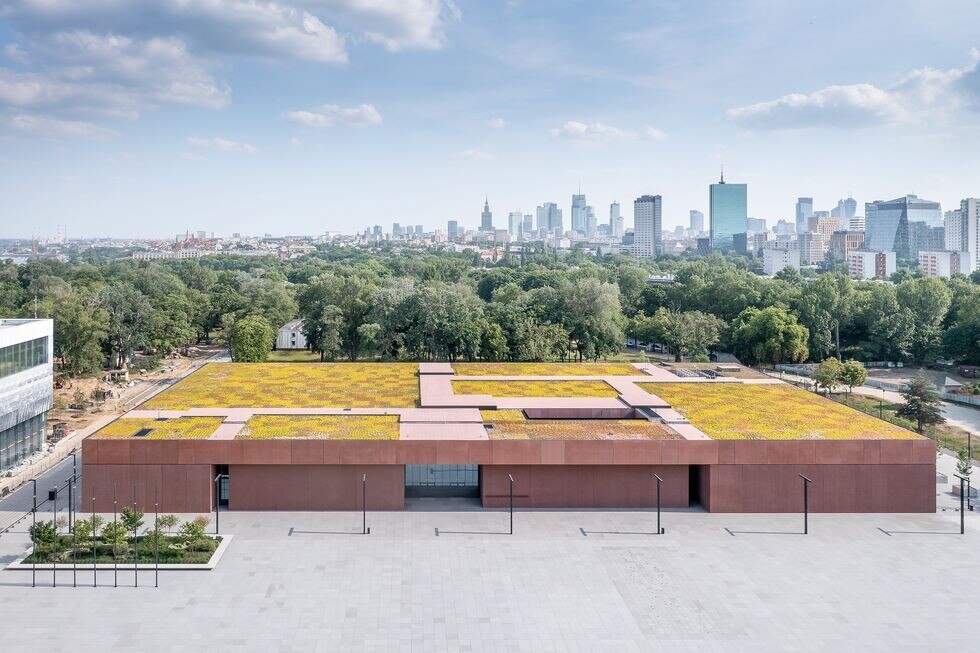Designed by architecture firm WXCA and engineering firm Buro Happold, the Polish Army Museum in Warsaw opens the city to the military fortress built in 1830 by the Russian Empire, which dominates the landscape from the top of a hill.
The complex consists of a total of eight volumes, between historical buildings and two north and south wings of new construction, which – together with the Museum of the Tenth Pavilion of Warsaw, The Katyń Museum, and the upcoming Polish History Museum – will form one of the largest museum complexes in Europe.
The museum – 12,000 square meters – will host the entire history of Polish armaments, with rooms dedicated to permanent exhibitions and other flexible spaces, designed for temporary exhibitions, events, and even performances. The various spaces will be connected by a wide green cover.
The complex will feature a compact use of pigmented concrete, which takes up the color of the walls of the Warsaw Citadel and will give the exterior appearance an impregnable image, similar to that of a contemporary fortress.










